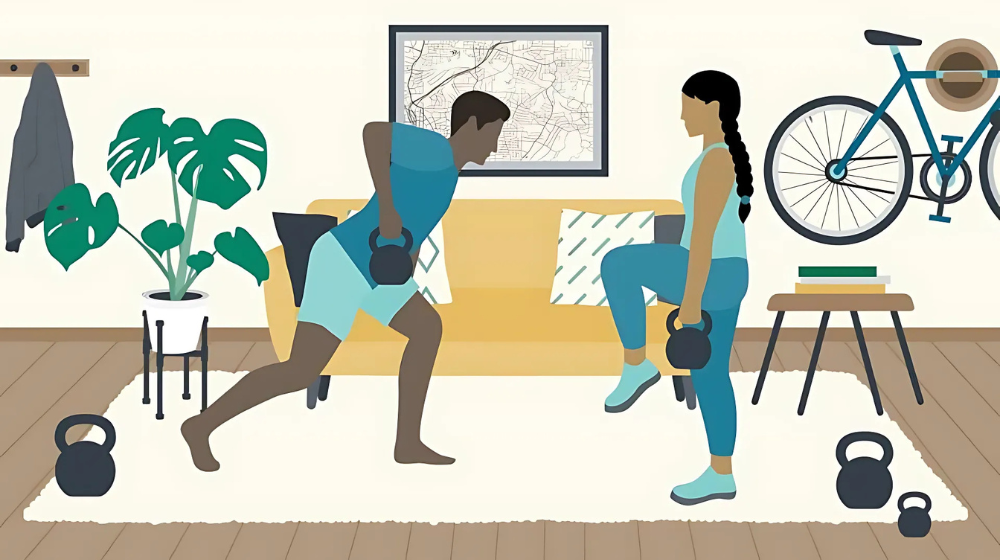Strength training vs. cardio: which is more effective for weight loss? Learn the pros and cons of each, and find out how to combine them for optimal fat-burning results.
Introduction
When it comes to losing weight, there’s a common debate: Should you focus on strength training, or is cardio the better option? Both are effective methods for burning fat and achieving your fitness goals, but each has its own unique benefits. In this article, we’ll dive deep into both strength training and cardio, explore how they impact weight loss, and help you decide which approach is best for your journey. Let’s break it down!
What is Strength Training?

Strength training involves exercises designed to increase muscle strength and endurance through resistance. This resistance can come from free weights, machines, or even your own body weight. Unlike cardio, which primarily targets cardiovascular endurance, strength training focuses on building muscle.
Benefits of Strength Training for Weight Loss
Many people think strength training is just for bodybuilders, but it’s a powerhouse for fat loss too. Here’s why: when you build muscle, you increase your resting metabolic rate (RMR). This means you’ll burn more calories even when you’re not working out. Plus, muscle mass is denser than fat, so as you gain muscle and lose fat, your body composition improves, leading to a leaner physique.
How Strength Training Builds Muscle and Burns Fat
Strength training works by creating tiny tears in your muscle fibers. As these fibers repair and grow back stronger, your muscles increase in size. This process requires energy, and that energy comes from burning calories. More muscle means a higher metabolism, which means more calories burned throughout the day—even when you’re resting!
What is Cardio?
Cardio, short for cardiovascular exercise, is any exercise that raises your heart rate and keeps it elevated for an extended period. The goal is to improve the efficiency of your heart, lungs, and circulatory system. Common types of cardio include running, swimming, cycling, and even walking.
Different Types of Cardio Workouts
There are two main types of cardio: steady-state and high-intensity interval training (HIIT). Steady-state cardio involves maintaining a consistent pace, like jogging at a moderate speed for 30 minutes. HIIT, on the other hand, involves alternating between short bursts of high-intensity activity and periods of rest. HIIT is especially effective for burning fat in a shorter amount of time.
How Cardio Contributes to Weight Loss
Cardio is known for burning calories during the workout, which is essential for creating a calorie deficit. The more calories you burn than you consume, the more fat you’ll lose. While cardio might not build muscle like strength training, it is a fantastic fat burner when performed consistently. Longer or more intense sessions will lead to greater calorie expenditure, which accelerates fat loss.
Strength Training vs. Cardio: Key Differences
So, how do strength training and cardio stack up against each other in the battle of weight loss? Let’s compare them on some key points.
Calorie Burn Comparison: Strength Training vs. Cardio
Cardio generally burns more calories during a workout compared to strength training. A 30-minute run can burn anywhere from 300 to 500 calories depending on your intensity. However, strength training has the advantage of increasing muscle mass, which leads to more calories burned at rest. So while cardio burns calories during the session, strength training helps you burn more throughout the day.
Impact on Metabolism: Strength Training and Cardio
Both cardio and strength training impact your metabolism, but in different ways. Cardio boosts your metabolism temporarily while you’re exercising, but strength training has a lasting effect. When you build muscle, you increase your resting metabolic rate (RMR), which means you’ll burn more calories even when you’re not working out. This is the reason strength training is often considered the more effective long-term solution for weight loss.
The Afterburn Effect (EPOC)
Strength training has a unique advantage: the afterburn effect, also known as excess post-exercise oxygen consumption (EPOC). After a heavy lifting session, your body continues to burn calories at a higher rate for hours, sometimes up to 24 hours. This afterburn effect is much more pronounced after strength training compared to cardio, which makes it a great choice for maximizing calorie burn.
Time Efficiency: Which Workout Type Gets Results Faster?
If you’re in a hurry to lose weight, cardio might seem like the quicker option. You can burn a significant amount of calories in a relatively short amount of time with high-intensity cardio workouts. However, strength training is an investment in your body’s long-term fat-burning capabilities. The muscle you build increases your metabolism, which will continue to burn fat for hours after your workout is done. So, in the long run, strength training can be just as time-efficient for fat loss.
Can You Combine Strength Training and Cardio for Weight Loss?
Absolutely! Combining both strength training and cardio can create a well-rounded fitness routine that targets both fat loss and muscle gain.
Benefits of Combining Strength Training and Cardio
By combining strength training and cardio, you get the best of both worlds. Cardio helps burn fat, while strength training preserves and builds muscle mass, ensuring you don’t lose the muscle that keeps your metabolism high. The combination also helps prevent workout burnout, as you can alternate between different exercises to keep things fresh.
Sample Workout Plan: Balancing Strength and Cardio
A balanced approach could look like this: 3 days a week of strength training and 2 days of cardio. For example, you might do strength training on Monday, Wednesday, and Friday, while incorporating cardio on Tuesday and Thursday. On your cardio days, consider mixing up the intensity, from steady-state jogging to a HIIT workout to keep your body guessing.
The Role of Nutrition in Weight Loss

Regardless of whether you choose strength training, cardio, or both, your diet plays a huge role in your weight loss success.
Fueling Your Body for Strength Training and Cardio
Strength training requires protein to support muscle repair and growth. Cardio workouts, especially longer sessions, require carbohydrates to fuel your energy. A balanced diet that includes lean proteins, healthy fats, and complex carbs will support both types of exercise and help you reach your weight loss goals more effectively.
Strength Training and Cardio for Different Fitness Goals
Different goals require different approaches. Here’s how strength training and cardio stack up against each other for specific fitness objectives.
Which is Better for Muscle Building?
If muscle growth is your primary goal, strength training is essential. Cardio won’t build muscle in the same way strength training does, and in fact, too much cardio can even hinder muscle growth by burning up the calories your muscles need to repair and grow.
Which is Better for Fat Loss?
For fat loss, a combination of cardio and strength training works best. Cardio burns fat, while strength training preserves muscle. Together, they create a powerful duo for effective weight loss.
Which is Better for Cardiovascular Health?
If you’re aiming to improve your cardiovascular health, cardio is the way to go. Running, cycling, and swimming are excellent exercises for improving heart health and endurance.
Common Myths About Strength Training and Cardio
Myth 1: Cardio is the Only Way to Lose Weight
Many people believe that cardio is the best—and only—way to lose weight. While it’s true that cardio burns calories, strength training is just as important for boosting your metabolism and preserving muscle mass during the fat loss process.
Myth 2: Strength Training Will Make You Bulky
This is a common misconception, especially among women. Strength training alone will not make you bulky. It takes a specific training program combined with a high-calorie, muscle-building diet to significantly increase muscle mass. For most people, strength training simply helps them get leaner and more toned.
Personalizing Your Weight Loss Journey
The best workout for weight loss depends on your personal goals, body type, and fitness level.
Choosing the Right Approach for Your Body and Goals
If your goal is fat loss, combining strength training with cardio is likely your best bet. If you’re looking to build muscle or improve strength, strength training should take center stage. For cardiovascular endurance, cardio workouts will help improve your heart health and stamina.
How to Track Progress: Strength Training vs. Cardio
Tracking progress can be as simple as measuring your body composition (fat vs. muscle), tracking the weights you lift, or monitoring your cardiovascular endurance. Either way, regular check-ins will help you see how your body is responding to your training and make adjustments as needed.
Conclusion: Which Workout is Right for You?
Both strength training and cardio are incredibly effective for weight loss. If you’re looking to burn fat while building muscle, a combination of both is ideal. For pure fat loss, cardio might give you a quicker calorie burn, but strength training will help you maintain and build lean muscle, which is key for long-term fat loss. Ultimately, the best approach is the one that you enjoy and can stick with long term.
FAQs about Strength Training vs. Cardio
Can I lose weight with just cardio?
Yes, cardio can help you burn calories and lose weight, but combining it with strength training will help you preserve muscle mass and boost your metabolism.
Will strength training help me lose belly fat?
Strength training can help reduce overall body fat, including belly fat, by building muscle and boosting your metabolism.
How often should I do cardio and strength training for weight loss?
Aim for 3-4 days of strength training and 2-3 days of cardio each week for the best results.
What type of cardio is best for weight loss?
High-intensity interval training (HIIT) has been shown to be particularly effective for fat loss, but steady-state cardio like running or cycling is also beneficial when done consistently.
Can I do both strength training and cardio on the same day?
Yes, you can do both on the same day. It’s best to prioritize strength training if your goal is muscle building, and do cardio after or on alternate days for optimal results.
How long should my cardio sessions be for weight loss?
Aim for 30-45 minutes of moderate to high-intensity cardio, depending on your fitness level and goals.
Can strength training help me lose weight without doing cardio?
Yes, strength training can help you lose weight by increasing muscle mass and boosting your metabolism, but it’s typically more effective when combined with cardio.
Does cardio burn more fat than strength training?
Cardio burns more calories during the session, but strength training has a longer-lasting impact on fat loss by increasing your resting metabolism.
Will doing too much cardio hinder muscle gain?
Yes, excessive cardio can interfere with muscle gain, especially if it results in a calorie deficit or reduces the time spent on strength training.
Can I do strength training every day?
While you can strength train daily, it’s important to allow your muscles to recover. Aim for at least 1-2 rest days per week.
What’s the best way to combine strength training and cardio?
A balanced approach might involve doing strength training 3-4 days a week and cardio 2-3 days a week, alternating between the two.
Should I do cardio before or after strength training?
It depends on your goals. If muscle building is your priority, do strength training first. If fat loss is your goal, you can start with cardio.
How can I avoid getting bored with cardio?
Mix it up! Try different types of cardio like cycling, swimming, or HIIT workouts to keep things interesting.
Will strength training make me bulky?
Not unless you’re specifically trying to build large muscles with heavy weights and a muscle-gaining diet. Strength training typically leads to a leaner, more toned body.
How can I measure progress in strength training?
Track the amount of weight you can lift, the number of reps and sets you complete, and changes in muscle definition or body composition.
By healthylyfe


